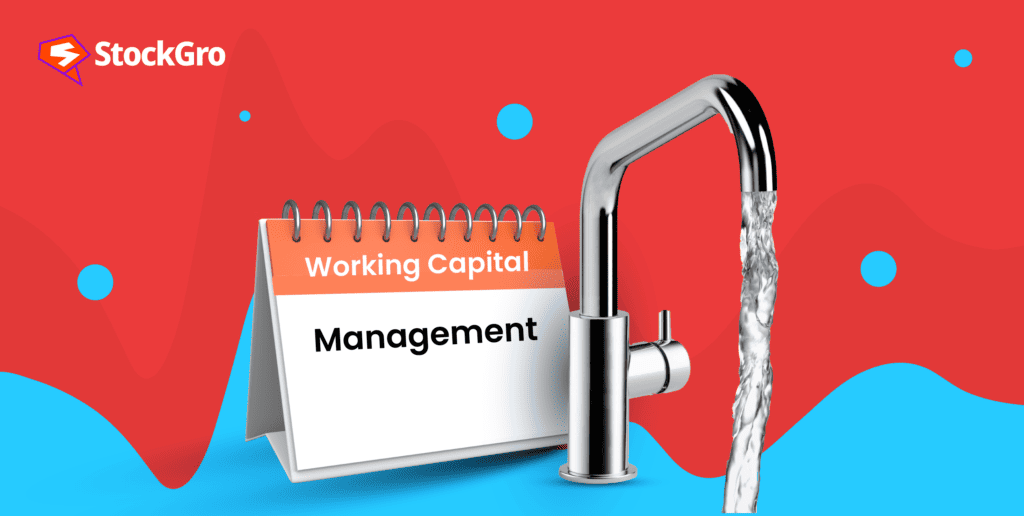
Working capital management is a crucial tool for guiding a company towards financial stability and operational efficiency in the ever-changing business world. It’s the unseen driving force behind a company’s ability to meet its immediate financial commitments and carry out its day-to-day operations.
Working capital management, however, is frequently overlooked in financial management despite its critical significance.
The purpose of this article is to clarify this significant topic so that you can see how it contributes to a business’s financial well-being and operational efficiency. Alright, then, let’s start.
What is working capital management?
Working capital, in the simplest terms, is what keeps a company running day-to-day. It’s the sum of a business’s current assets minus its current liabilities.
Those assets that can be turned into cash in the next twelve months are called current assets. Elements like inventory, accounts receivable, and cash are all part of this category. Contrarily, accounts payable, short-term debt, and similar expenses due within a year make up a company’s current liabilities.
Understanding working capital management is critical for managing a company’s short-term funds. The stability of a company’s finances can be assessed by its working capital, which shows that its assets are sufficient to meet its short-term obligations.
Factors affecting working capital management
- Business cycle
- Size of business
- Nature of business
- Volume of sales
- Production cycle
- Terms of purchases and sales
- Credit control
- Growth and expansion
- Management ability
Also read: Working capital – the what, how, and why of business lifelines/
Importance of working capital management
The health and efficiency of a business are shown by its working capital management, which is more than just a statistic. A company’s ability to satisfy its short-term obligations and operational costs is a key component of its financial health.
Good working capital management makes finding the sweet spot between liquidity and profitability easier. A company’s credibility and creditworthiness are enhanced when it has sufficient resources to meet its immediate obligations. Moreover, it prevents the company from sitting on assets that could be utilised for growth.
Additionally, operational efficiency can be enhanced by simplifying inventory, receivables, and payables brought about by effective working capital management. Better credit management, higher turnover, and lower holding costs are all possible outcomes.
Components of working capital management
The components of working capital management are the pillars upon which the entire system rests, and each is essential to the business’s overall success. The four components are:
Cash management: This entails overseeing the funds held by the business. Making sure the company has enough cash to cover its short-term obligations and make the most of any extra money is the goal of efficient cash management.
Accounts receivable management: Specifically, this means keeping track of the money that clients owe the business. Timely collection of receivables is a key component of efficient accounts receivable management, improving cash flow and decreasing the likelihood of bad debts.
Inventory management: This entails overseeing the inventory of the business. Having just the right amount of stock on hand to satisfy client demand while keeping holding costs to a minimum is the goal of effective inventory management.
Accounts payable management: This means keeping track of how much money the business has borrowed from its vendors. Companies with well-managed accounts payable are better able to meet their obligations to suppliers, which helps them keep good relationships with those suppliers and, maybe, negotiate better credit terms.
Working capital management ratios
When it comes to managing working capital, these ratios are crucial. If you want to know how healthy a company is financially and operationally, look no further than these ratios.
Working capital ratio:
A company’s liquidity in the near future is indicated by this ratio, which is also known as the current ratio. It can be calculated by subtracting the current liabilities from the current assets of a business. The working capital ratio can tell a lot about a company’s operational efficiency and short-term financial health.
Businesses with current ratios above 1 have enough liquid assets to cover their short-term obligations. However, a high ratio may also mean the business needs to use its resources well to generate income.
Collection ratio (days sales outstanding):
The collection ratio, also known as days sales outstanding (DSO), measures the average amount of time it takes for a business to collect payment after a credit sale.
The equation utilised to determine DSO of a business is:
DSO = Accounts ReceivablesNet Credit Sales Number of Days
In most cases, a lower DSO is preferable since it indicates that the company is improving its cash flow by collecting receivables more quickly. However, sales might take a hit if the DSO is extremely low, which could mean a strict credit policy.
Inventory turnover ratio:
A company’s inventory turnover ratio indicates the rate at which its inventory is sold. A simple division of COGS by average inventory for the given period yields this number.
A higher ratio is usually preferable because it shows strong sales and efficient inventory management.
However, if the ratio is extremely high, the company isn’t stocking enough products to meet customer demand, which could result in missed sales opportunities.
Also read: Unlocking financial insights: The power of ratio analysis/
Strategies for effective working capital management
A key indicator of sound financial management, working capital is necessary for smooth operations. Some methods for efficient management of working capital are as follows:
- Decrease liabilities and improve assets: Maximise the inflow of funds by lowering debt and reinvesting the savings in productive assets.
- Conduct a bottom-up budget review: Find wasteful spending and low-priority projects that can wait, to save money.
- Open more payment channels: Maximise your cash flow by accommodating buyer payment preferences and providing more payment options.
- Automate payments and invoicing systems: Automated systems can streamline processes to ensure payments are made on time.
- Leverage refinancing assets: To enhance cash flow, utilise assets that can be refinanced.
- Use strategic forecasting: To effectively manage cash flow, utilise strategic forecasting.
- Streamline inventory management: Maximise working capital by optimising inventory management.
- Maintain an updated cash flow plan: To effectively manage finances, keep a cash flow plan that is up-to-date.
Further reading: Take a tour of the economic concept of the ‘liquidity trap’.
Bottomline
So far, we have covered the fundamentals of working capital management, including what it is, why it’s important, and how to interpret the most important ratios.
Working capital management is similar to learning a new language: it’s difficult at first, but after you get the hang of it, it’s easy as pie. Your business’s operational efficiency, liquidity, and profitability can all be enhanced with this secret sauce.
So, as you work your way through the corporate world, remember to include these financial insights in your toolbox. In the world of corporations, knowledge is more than just power; it’s a source of profit!

